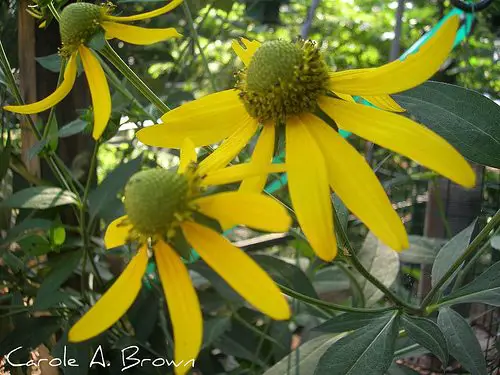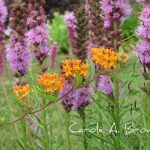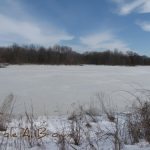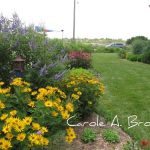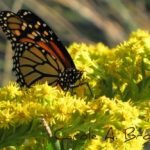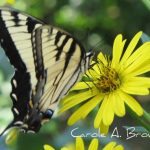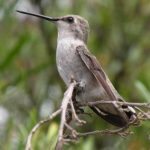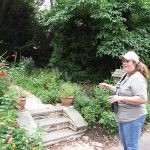“What should I plant” is the most frequently asked question I receive from people who’d like to attract more wildlife to their gardens. We have already discussed the top 10 woody plants to attract wildlife to your Ecosystem Garden. Now we”ll delve into the best herbaceous species.
These plants have been chosen based on a study by Doug Tallamy and Kimberley Shropshire, who painstakenly reviewed a mountain of scientific literature to determine the amount to which Lepidopteran species used various plants. Lepidoptera (Butterflies and Moths) are among the most studied insects, making them an easy choice in determing plant use by insects. Plant use by butterflies and moths is correlated with high usage by other insects and wildlife as well.
To find the most appropriate native species of each of these families of plants, the USDA plants database and the Ladybird Johnson Wildflower Center plants database are the best resources. Search for each family and then use the range maps and plant descriptions to choose species that are the best match for your area and conditions.
Drumroll please. Here’s the 10 best herbaceous plants for your wildlife garden:
- Goldenrod (Solidago), support 115 species. 125 Goldenrod species occur throughout the US. Goldenrod is used by many insects and spiders and birds who feed on the seeds and insects. No autumn garden is complete without several species of goldenrod bending in the breeze.
- Aster (Aster), support 112 species. This is a huge family, with species that thrive in prairie, meadow, pasture, roadside, and woodland environments. There are both spring and fall blooming species which means that you should choose a wide variety of species. Try to avoid the cultivars and opt instead for true native species. The asters provide abundant pollen and nectar for bees and butterflies and are a wonderful choice for any wildlife garden.
- Sunflower (Helianthus), support 73 species. When thinking of sunflowers, it is common to call the large-headed, many-seeded annual cultivars to mind, but there are many native perrenial species as well. The plants provide lots of nectar and pollen, and the seeds are eaten by many birds and other wildlife. Try a mix of native perrenial species with several annual species as well.
- Joe Pye (Eupatorium), support 42 species. Joe Pye is one of the best native alternatives for invasive Butterfly Bush, and includes Boneset, Snakeroot, and many species of Joe Pye. They produce a lot of nectar and pollen, making them an excellent choice for a pollinator garden.
- Morning Glory (Ipomoea), support 39 species. You must be very careful with morning glory because there are many introduced varieties which can be extremely invasive. When choosing a Morning Glory for your garden, it MUST be native to your area, or you will regret planting it. Please research your choice very carefully. Check with the native plant society in your state for guidance.
- Sedges (Carex), support 36 species. Many native sedges are considered threatened or endangered in the U.S., so your planting of them will help to protect them in addition to providing for wildlife. Sedges work in grassland, prairie, and woodland environments. We often neglect these species when planning our gardens for wildlife, but grasses and sedges are an essential element for wildlife in our gardens.
- Honeysuckle (Lonicera), support 36 species. Do not plant Japanese Honeysuckle! Please check carefully to ensure that you are choosing Lonicera species that are native to your area because there are several very invasive alien honeysuckles wreaking havoc in many ecosystems. Native species are wonderful for hummingbirds and butterflies.
- Lupine (Lupinus), support 33 species. Several endangered butterflies, such as the Karner Blue, are reliant on species from this family. Check with your state native plant society to determine which species will be most appropriate for your garden.
- Violets (Viola), support 29 species. Violets are host plants for one of my favorite groups of butterflies, the Fritillaries, many of which are endangered. Choose several species for early spring color and wildlife habitat
- Geraniums (Geranium), support 23 species. This does not mean those hanging baskets you can buy at the grocery store. You want to find native species that are best for your location.
There are many reliable native plant nurseries in the U.S. and by choosing your plants from these sources, you are better guaranteed to be using the most appropriate plants for your Ecosystem Garden. Plus, you are supporting a business that has made native plants a priority. This cannot be said about the garden center at Walmart or Home Depot. Support a local business.
See also Top 10 Native Woody Plants for Ecosystem Gardening
Leave Us Your Comments Below!
Click the Submit Your Comments button below to leave us your comments, questions, or feedback!
More From Ecosystem Gardening:
Submit your review | |
I want to thank you for exposinging me to plants that will "fill in" with my attempts to use native plants from my region. Also thank you for the resources, and interesting nativr gardeners.
As a list lover, I appreciate the presentation of top plant species by wildlife use. People who think they love nature rarely if ever take the time to explore how they can do their part to preserve our declining ecosystem. I see fewer and fewer birds all the time. On Saturday I attended a community market in a small town where I used to enjoy watching birds flitting around trees. Not one bird did I see that day. Yes, habitat destruction has been with us for way too long. And insecticide spraying. My suspicions are that ElectroSmog is deterring or killing wildlife. Cell towers and miniaturized transmitters. And it is everywhere.
Can you suggest what part of the planting pyramid could be devoted to food for humans?

